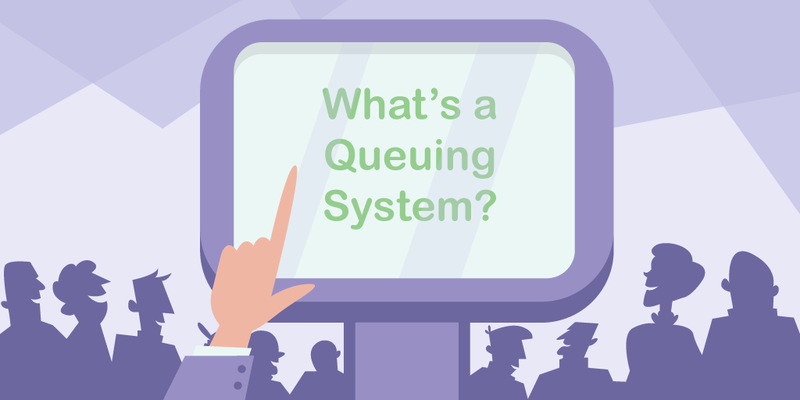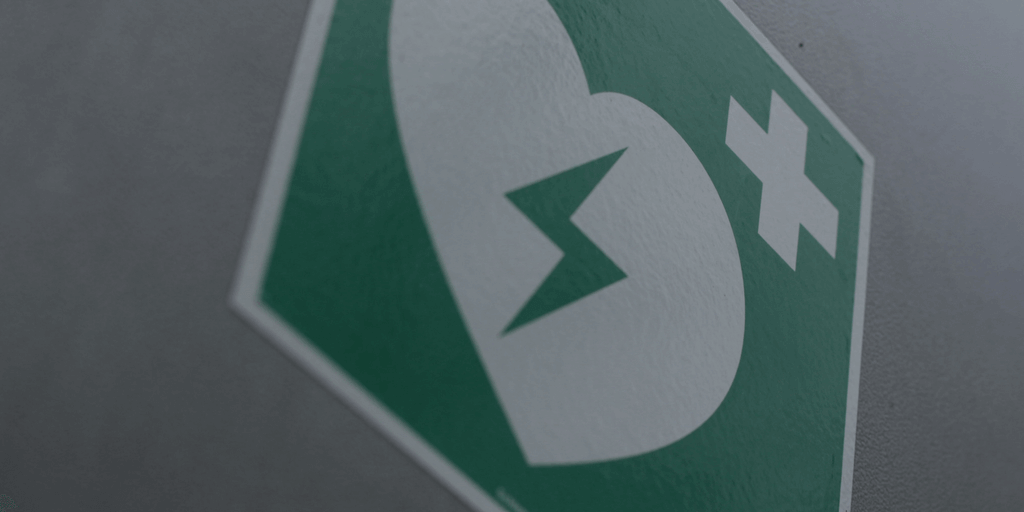What is a queuing system?
On the first glance, the answer is obvious: it’s a system which purpose is to help with queuing.
It can function based on virtual queuing, remote sign-in, take a number system and other queuing methods.
While this answer isn’t strictly wrong, names can be deceiving. It’s easy to take a queuing solution for granted when you don’t fully understand everything that it entails.
So take out your notebooks and sharpen your pencils! We’re going down the adventurous road to queue management.
You’ll learn why queue management matters, how queue systems work, and what benefits there are to using a queuing solution in your business.
Let’s dive right in.
Queuing systems: table of contents
To make this guide more digestible, it is divided into chapters. Feel free to read everything from top to bottom, or skip to the section that interests you the most.

Queue management: what it is and why it matters
Previously, we’ve defined queue management as a set of principles aimed at controlling customer flow and streamlining the queuing experience.
To add to that, queue management is not something that is needed once or twice. For it to bring results, queue management needs to be a continuous process.
On paper, a huge number of visitors is a good thing for your business. That’s a lot of potential sales just waiting to happen!
The problem arises when the influx of customer exceeds the capabilities of employees. The fewer service clerks there are, the smaller the crowd of customers they can manage.
The results? 51% of US consumers switched service providers in 2012 due to poor customer service experiences.
Left on their own, service clerks can’t help but feel overwhelmed when faced with Hun-like hordes of visitors storming in. It’s only when equipped with queue management tools that they can prevail.
Queue management primarily concerns queue areas — i.e., places where queues happen. But what exactly is a queue?
You could say it’s a line of people waiting for services or products to be provided. But you can also frame it as an application of “demands exceed the supply” problem.
As we’ve put it above, “the influx of customers (demands) exceed the capabilities of employees (supply)”.
Best queue management softwares help you to maintain this fragile equilibrium.
Introduction to queuing systems

Queue systems have come a long way. They went from simple physical barriers to state-of-the-art virtual queuing software
There are many types of queuing solutions to choose from, but their most simple cases are also among the least effective.
Take, for example, crowd barriers.
Crowd barriers, or stanchions, are typically used in hotels, banks, movie theaters, public events, and other venues. Their main goal is crowd control through limiting the access to certain areas.
On the one hand, it seems logical to use physical tools to manage the flow of customers who are physically present at your location.
On the other hand, our digital age calls for something more sophisticated. Putting your visitors inside a labyrinth of rope barriers also has adverse effect on their psychological state.
Remember: 12 positive customer service experiences to make up for one negative experience.
Obviously, the situation calls for more elegant solutions.
A modern, digital-based queuing solution operates on a different level than simple crowd management tools.
A digital queue system provide customers with a sense of agency, as they sign themselves up for services using self-service kiosks — interactive terminals placed at points of high foot traffic.
After signing up, a customer needs to look at the screen which provides relevant stats: your place in a queue, the number of people before you, the service point you need to go to, etc.
With clear instructions and text message notifications, the queuing process is faster than ever. The checkouts are efficient, waiting time is reduced, and shopping experience is greatly improved.
Meanwhile, staff receives valuable metrics like queue lengths, waiting times, and other information provided by queue management systems that work towards further improving the service.
What exactly goes into making the process of queuing smooth? Let's take a look at the principles of queuing systems.
The elements of a queuing system
Queue management — and, by extension, queue systems — rests on three main principles of queuing. These are fairness, engaging queuing, and explained waiting.
Let’s explore each of these principles, one by one.
Fair queuing
Nobody likes queue-jumpers and line-cutters. But usually when confronted with clear-cut cases of queue jumping, people don’t voice their dissatisfaction and prefer to keep things civil.
Only 10% of people in a queue prevent line-cutting.
However, this means they will lash out at your queuing system that lets people jump the queue without consequences.
As a result, your business loses a lot of respect by failing to effectively deal with this situation.
Fair treatment means that everybody accepts the rules of the queue and their place in it. If there’s a priority list, it needs to be communicated in advance.
Should there be queue-jumpers, they need to face consequences — or better yet, prevented altogether.
A lack of order in your queues breeds anxiety and concern. People are afraid of leaving their spot and generally mistrust their fellow queue-standers.
This makes for an unrewarding customer service atmosphere.
Fairness in queuing is not to be underestimated. Making sure your queues are fair is one of the most important aspect of good queue management.
Read more: Weighing the Options: Can Queue-Jumping Be Fair?
Engaging queuing
Believe it or not, the passage of time is not an objective thing. It largely depends on a person’s unique perception of time.
Twiddling your thumbs while standing in a queue does nothing to shorten your wait time. In fact, this can make your wait time seem even longer.
When customers are not engaged, their focus is on how much time they've waited.
Perceived wait time often feels longer than the actual time spent in a queue.
This is precisely the reason why you see magazines and brochures lying around in waiting areas. Even a simple activity can take your mind off the fact that you’re waiting and, effectively, help you kill time.
But you can go about it in another way.
When there’s no fear of losing their spot in a queue, customers are free to do what they want — browse their phones, walk around the shop, engage with service staff, etc.
A queuing solution that gets rid of the “time perception” problem kills two birds with one stone.
Firstly, this makes for a better shopping experience. Both the perceived and actual wait times are reduced, greatly improving your business’ image in your visitors’ eyes.
Secondly, this may also result in additional revenue. While browsing your store, your visitors may find something that they would like to purchase either right away or at some point in the future.
Effectively, this is advertising and merchandising, rolled into one.
Explaining customer wait times

Firstly, explained waiting means customers need to know how long they have to wait. In amusement parks, this comes in the form of signs outside a queue, stating how much wait time is expected.
Secondly, explained waiting means any hiccup in the queuing process needs to have a clearly stated reason. When clerks do not tend to a customer, they need to have a clear, verifiable reason.
Of course, it is easy to mistake a busy clerk for an idle one. And even when a customer suspects a clerk is slacking off, most of the time there would be no outbreak.
However, you still have to consider the psychology of your customers.
Human brain works in mysterious ways. Our emotions often cloud our perception of reality, which is how uncertain waits can feel longer than known, finite waits.
But you also have to consider this: people standing in a queue without a clue why they’ve been waiting for so long feel powerless.
Your company, on the other hand, is supposed to improve their life and make them feel better.
When there’s a clear cause for the delay, at least customers have concrete information and don’t descend into full-on paranoia.
Naturally, the length of the period your customers are willing to wait also depends on the value of your product or service. Or, rather, it depends on the perceived value thereof.
That is not to say you can neglect waiting line management when you believe you’re offering something exceptional, but there are many nuances you have to take into account.
Types of queuing systems in different industries

At first, you may think that queue systems are something that would only work in retail, where the number of clients you can serve in limited time is what matters the most.
However, crowd management is an issue worth tackling in many other industries — from healthcare to government, to education, to banking.
Let’s see how queuing solutions can help in each case.
Queue management in retail
The most obvious application of queue management is brick-and-mortar stores. If they cannot manage their lines efficiently, they are risking losing customers to their competitors.
Long wait times and mismanaged queues are a bane of businesses worldwide. Implementing a queue system for retail is what allows to turn these wait times into a smooth customer experience.
Visitors who are met with proper queue management also can turn into loyal customers — but more on that later.
Waiting line management in healthcare
How bad are wait times in healthcare? 21% patients go elsewhere to fill their prescription due to long wait time.
The thing is, patients — as opposed to customers — don’t have the luxury of waiting. Even when it’s not a life-or-death situation, patients don’t want to spend more time in a hospital than necessary.
A healthcare queue management system would help control the patient flow, building a better atmosphere for both the hospital staff and patients.
For the former, it’s all about taking the burden off their shoulder, helping them manage their time better. For the latter, it’s all about reducing their anxiety and frustration.
Queue management in education

Although there are peak times in retail and healthcare, nowhere are they more apparent than in education.
Schools have to take into account the influx of students and would-be students during the enrollment and at the beginning and end of semesters.
Then, there are also breaks when students visit the admission office to get the answers to their questions.
What happens once you implement a queuing system at school? It helps with organizing orderly waiting lines, preventing students from crowding up the place at peak times.
Visitor management in government facilities
Government facilities are a black sheep in this list. They are not too worries about the level of their customer management, since people come to them for services no one else can provide.
In retail as well as pretty much every other industry, an additional customer is a potential sale or revenue. For government offices, it’s an additional cost.
They need a waiting line management system precisely because they don’t want to spend time on managing and servicing their visitors. The faster the output, the better.
As you can see, queuing solutions bring many benefits to all industries that need to face more than one customer at a time.
Some industries — like government offices — are interested in the queuing aspect of their problem. Others — like retail and healthcare — want to improve their customer service situation.
A queuing solution is an irreplaceable tool that manages to help with both aspects of visitor management.
The benefits of a queuing system
“The queuing aspect” and “improve the customer service situation” both sound good, but also vague enough. Something a snake oil salesman would say.
So let’s get down to specifics. Namely, what kind of benefits a queuing solution can bring your business.
Increase customer loyalty

In our modern age, where retaining a customer is more cost-efficient than getting a new one, customer loyalty is an important talking point.
Considering that nowadays, customers tend to be more selective and are not afraid of switching to a new brand, your have to make sure your customers like the experience they’re getting.
Even the smallest details matter. Long waiting time may not have been a deal-breaker a few decades ago, but now reducing wait time plays a major role in building positive customer experience.
Things like expected wait, queue length, and wait time to service time ratio are what makes or break a business.
Basic math suggests that less time spent waiting equals more time spent shopping. Even when it doesn’t affect shopping habits of your customers, it makes them leave in good mood.
The last moments we spend at a counter are the most crucial.
A customer decides whether he enjoyed the overall shopping experience or not. No amount of additional customer service afterwards trumps the first impression.
By creating a better shopping experience, queuing solutions help your business turn visitors into loyal customers. A loyal customer does not only visit your business more often but also tends to purchase more.
In short, loyal customers are the backbone of success, and a queuing solutions helps you get them more easily.
Gather customer data
Queuing solutions do not only help you improve your business right now, they also help you improve it in the future. And they do so with the help of customer data.
You don’t have to hire and train additional staff or install special sensors to get accurate footfall metrics. A queuing solution doubles as a people counting solution.
Since a queue system automatically keeps track of all signed-up customers, you get easy access to the number of visitors, queue demand, and wait times.
In other words, a queue system helps you generate detailed, real-time retail analytics:
The number of visitors.
The number of no-shows.
Identify areas with low/high footfall.
Discover wait, idle, and service times.
The hard numbers gathered and processed by a queuing solutions helps your business to take advantage of sales opportunities and further improve your service.
The ability to compare the current data to its past counterpart helps you understand whether you’re moving in the right direction.
Efficient use of staff

We’ve already mentioned “taking the load off employees”, but what does it mean, exactly?
You have to understand that managing visitors is a lot of work. Greeting them, signing them up, showing them directions — that’s a lot of time spent for every visitor.
When you multiply this amount by the number of daily visitors, it becomes apparent just how much time is wasted on something that could be automated.
A queuing solution is aimed at making the life better not only for your customers but also employees. Once their time is freed up to pursue more important tasks, customer service improves by leaps and bounds.
Coming back to the data aspect of QMS, analytics help with determining whether the use of staff is efficient or not.
It can show the kinks in the workforce management, by pinpointing clerks who have hard time managing their visitors.
Perhaps it’s time to provide additional training? How about redeploying employees to this problem area? Or maybe you need to add another service point?
The choice is up to you. But it’s a queuing solution that helps you make this choice informed.
A brief summary on queuing systems

To repeat what we’ve learned so far, a queue system is an essential part of modern businesses’ service.
A queuing solution is needed in every industry, from retail to education, and this needs grows stronger as visitors crave more comfort.
Queue management’s main focus is on customer experience, but the value of a queue system is not limited to solving queues.
Queue management helps decrease customer wait and service times, improve service and staff efficiency, thereby increasing revenue.
By providing your customers with fair, reasonable, explained wait times, you’re building loyal customer base for your business.
Take a look at businesses who already use queuing solutions to improve their services. Isn’t this a company you’d want to be a part of?
With a free 14-day Qminder trial, you're one step closer to building a business you and your customers have always wanted.






